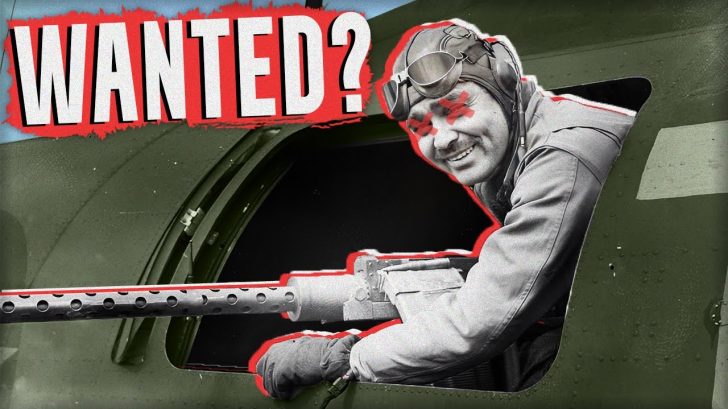How good do you have to be for Adolf Hitler to put a bounty over your head?
King of Hollywood
At first glance, the connection between Adolf Hitler and Clark Gable might appear puzzling. Gable, a prominent actor known for his charismatic on-screen presence, portrayed characters with strong moral compasses that resonated with viewers – including Adolf Hitler.

Hitler was known to be a huge fan of Clark Gable. So much so that he ordered Goering to place a cash bounty of $5,000 ($100,000 today) over Gable’s head, saying he wanted the actor to be captured alive so he could star in his propaganda films.
Entering Service
Tragedy would strike Gable’s life in January of 1942. Just a few weeks after the bombing of Pearl Harbor, Gable’s wife, Carol Lombard, quickly joined the war effort by raising funds for the war in a bond tour. As she and a group of American servicemen were on board a DC-3 Sky Train, the pilot would make a fatal mistake that ultimately cost the lives of everyone on board.

Devastated by his loss, Gable decided to join the war effort a few months later.
MGM Studios were reluctant to send their prized actor at first, but nobody could stop Gable to volunteer for the US Army Air Corps anyway.
He was offered a special assignment, in a semi-active role, to make a war film about the aviators in England. Gable himself wanted to fly in combat missions regularly, but he needed approval to do so.
Asking For Permission
After completing gunnery training, Gable was sent to England in 1943 where he would participate in several “relatively safe” missions over Europe.
On August 12, 1943, Gable was again approved to go on a mission with the B-17 “Ain’t It Gruesome” crew. This time, however, would be different as the crew was participating in the first major bombing raid on the Ruhr Valley.

As the B-17s neared their targets, multiple groups were separated by the thick cloud cover, heavy Flak, and German fighter planes.
Gable was able to record footage of Flak exploding right outside their bomber, and a few minutes later, realized that a 20mm Flak round had hit the aircraft right where he was standing.
Close Call
The round had gone through his shoe’s heel and penetrated through the top of the fuselage. Had it exploded, Gable would have surely been killed.
Another fighter scored a hit on the bomber, taking out one engine and seriously damaging the aircraft. Luckily, Gable’s crew was able to make it back to England.

Of the 183 B-17s that participated in the bombings, 23 would be shot down while three more were damaged beyond repair. As a result, 83 men were killed, 49 more were wounded, and 154 were taken as prisoners of war.
Combat America
When word reached MGM Studios about Gable’s close call, they immediately pressured the Air Force to remove their star actor from the frontlines. In November of that year, Gable was removed from combat duty and brought back 50,000 ft of color footage from his time as a gunner and member of the 351st Bomb Group.

This footage would later be incorporated into the film, “Combat America”, in 1945, which showed the day-to-day life of a B-17 crew member in 1943.



